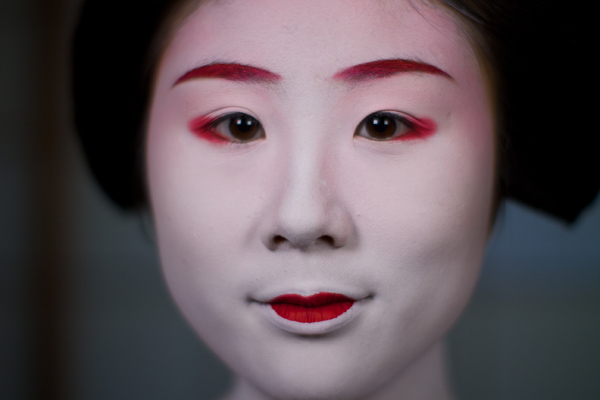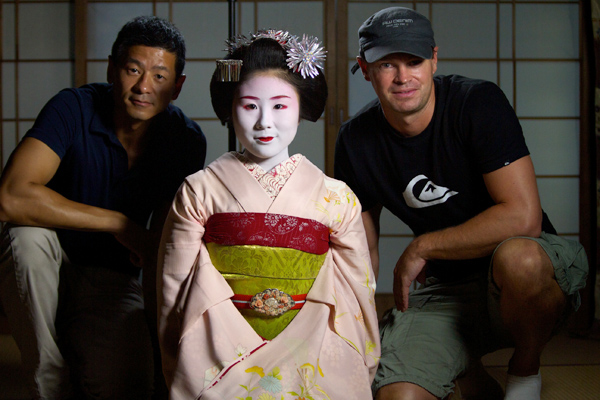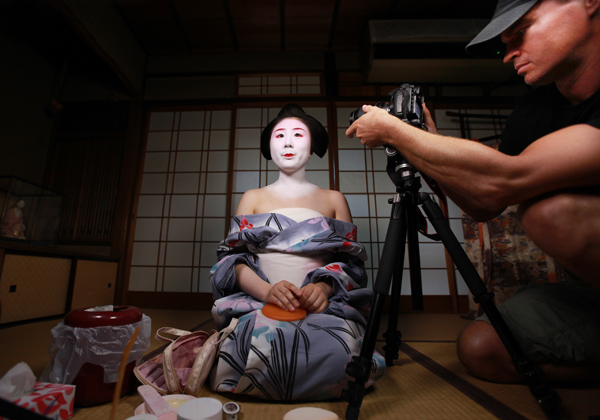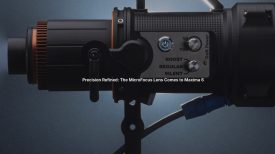The changing world of Japan’s Geisha from Matthew Allard on Vimeo.
The changing face of geishas was one of the stories I covered on a recent assignment to Japan. For centuries their mysterious world was reserved for the elite, with wealthy men paying thousands of dollars for the privilege of a geisha’s company.
Times in Japan have changed and the modern geisha has had to adapt to survive. With the financial crisis that has swept across the world, the number of clients has greatly declined. Geishas or Maiko (the trainees) have now had to look for other sources of income. In Kyoto, beer gardens are now using them to mingle with customers and dance on a small stage. This is a far cry from the exclusivity the culture thrived on for generations. It has brought them out of teahouses and into the world of the common person.
Correspondent Steve Chao and I pre-planned to shoot this story on a DSLR. I usually shoot on Sony XDCAM HD cameras, but they are not great in low light and are big and heavy and don’t allow you to get that intimate with your subject. Our shoot involved filming at night in a rooftop beer garden and also in a small teahouse. It is very difficult and usually horribly expensive to film a geisha; we were very lucky and managed to find a young Maiko to shoot, but were given limited access and time. I wanted an intimate feel to the story, to take you into the geishas’ world but also show you how they have been forced to adapt to modern times.
Armed with a Canon 7D, 5Dmk2 and 7 lenses we got to work. The beer garden was crowded and dark, but the 7D allowed me to shoot in an intimate environment where the light wasn’t ideal. I don’t like using artificial light unless It is absolutely necessary and most of the shots in the beer garden were made using ambient light. On a few, I had Steve hold a Litepanels 1×1 light on a boom pole above the table. These are fantastic and produce a beautiful soft light that imitates ambient light. All the sound was recorded separately on a Zoom H4N using either Seinnheiser radio or shotgun mics.
The next part of the story involved shooting the Maiko doing her make-up in a small traditional Japanese house. This is extremely rare to get and I wanted to make it look as good as I could in the limited time we had with her. She would put her make-up on in front of a large mirror with traditional Japanese sliding doors in the background so I turned off all the lights in the room and placed two 1×1 Litepanel LED lights dimmed down on either side of the mirror. Given the small room and the size of the mirror I wanted to get 3 different angles of her transforming herself into a geisha. I placed the 5D with a Canon 16-35mm f2.8 lens at a low angle right underneath the mirror. This camera was going to record the wide shot for the whole sequence. The 7D was placed very close up to the edge of the mirror but it had to be far back enough that it couldn’t be seen in the wide shot by the other camera. This made the 7D very hard to operate as it was in an awkward position, but the compromise had to be made.
The 7D was running a Canon 100mm f2.8 macro (the non-stabilized version). I wanted to shoot very close details of the make-up being applied. I also wanted very shallow depth of field. I was unable to use my Zacuto Z-finder or a monitor due to the position of the camera. I was also forced to continually rack focus as the shot was so tight and the talent was constantly moving. After 45 minutes my eyes were watering from having to concentrate so hard. To add to the difficulty, she couldn’t stop or repeat anything. I had one shot at it and if I got it wrong or out of focus I couldn’t do it again.
This shoot proved to be very difficult but I was happy with the end result. The 7D was set in 720p/50fps as I wanted to slow down the make-up sequence in Apple’s Cinema tools. It was cut on FCP and there was no use of Magic Bullet or fancy color correction programs. I’m shooting for international broadcast and I don’t want soft, overly colour-corrected images. The joy for me is getting it right when you shoot it and not having to say….”I’ll fix it in post” I’m not sure if I just happened to get a great 7D, but I shoot on the standard camera profile and I’m more than happy with the image it produces. The DSLR still provides me with a lot of problems; bad moire, rolling shutter and – in almost all situations without a very good shoulder support – terrible hand-held results. The cameras provide spectacular bang for your buck but if you use them you have to know their limitations and plan accordingly. I travel almost every week to shoot stories across Asia-Pacific. This is only the third story I have shot completely on DSLRs because in most cases I don’t have the time or the limitations of the cameras make it too hard to use on many assignments. While they do have their place in my kit, I’m excited about the new breed of hybrid video/DSLR cameras that are on the horizon. I don’t ever see DSLRs getting proper audio, full HDMI out or all the features we crave. Technology is moving so quickly that a new breed of cameras will ultimately outdate the video DSLR.
Lenses used on this shoot were a Canon 70-200mm f2.8 IS II, 50mm f1.2, 135mm f2, 24-70mm f2.8, 100mm Macro f2.8, 16-35mm f2.8 and a Tokina 11-16mm f2.8. All interviews were shot on the 70-200mm.
About Matthew Allard, Aljazeera Senior Field Cameraman, Kuala Lumpur:
Matt has been a Camera/Editor in TV news for 20 years, previously working for both Channel 9 and Channel 10 in Australia. Twice Network Ten Australia’s cameraman of the year as well as being a Walkley Finalist for outstanding camerawork in 2006 (for coverage of the Cronulla Race Riots) and a Logie Finalist for outstanding news coverage 2006 (Bali 9). He has covered news events in more than 30 countries, from major sporting events to terrorist bombings. Based out of the Kuala Lumpur broadcast centre in Malaysia he is an avid user and follower of new technology, shooting stories on HD broadcast cameras as well as new Canon DSLR’s.









